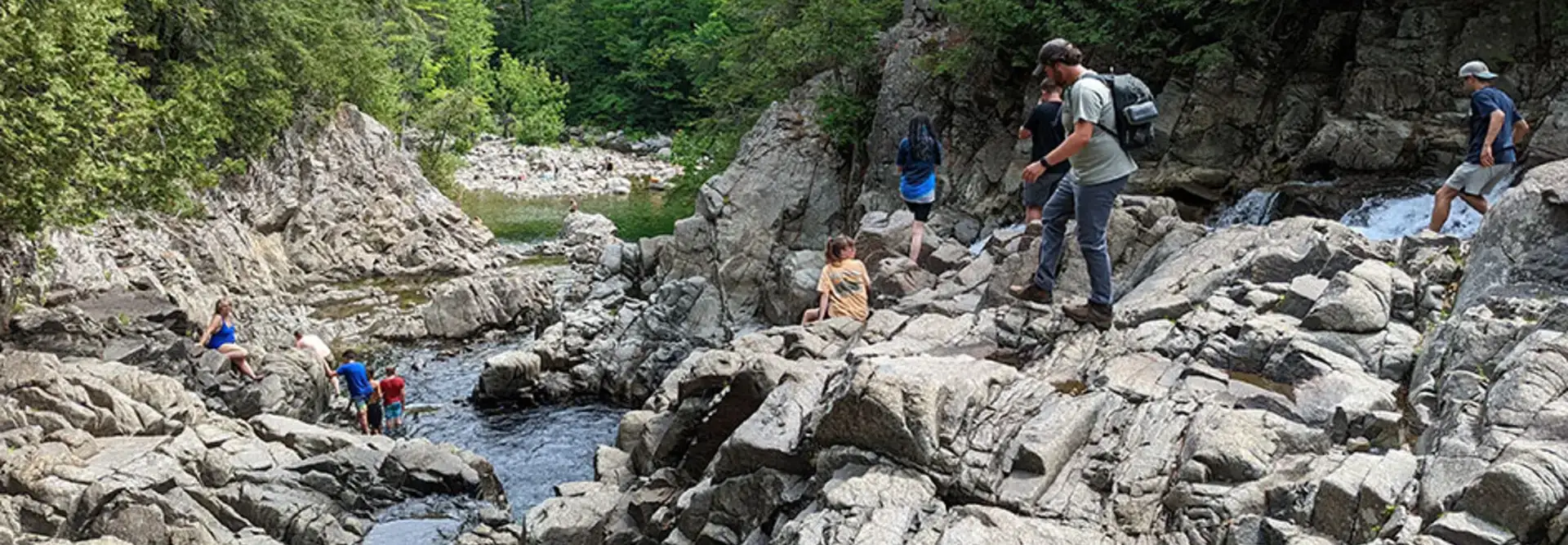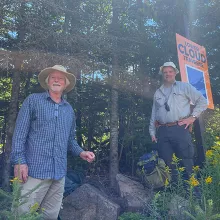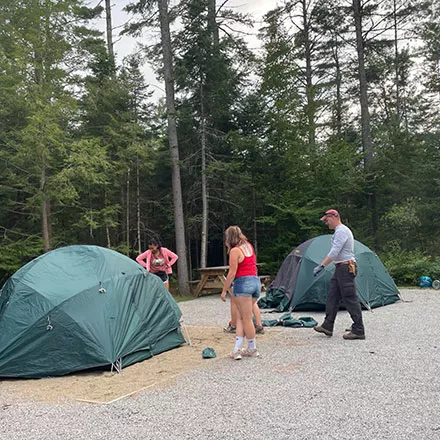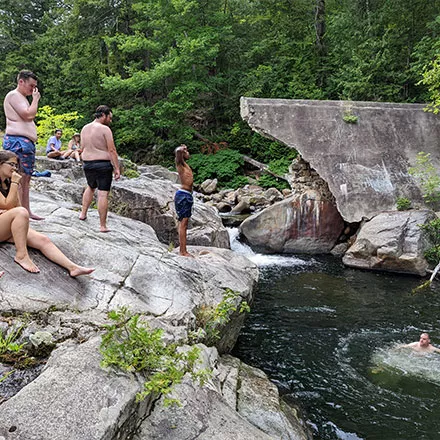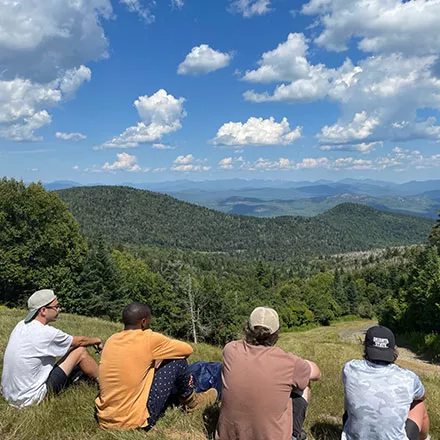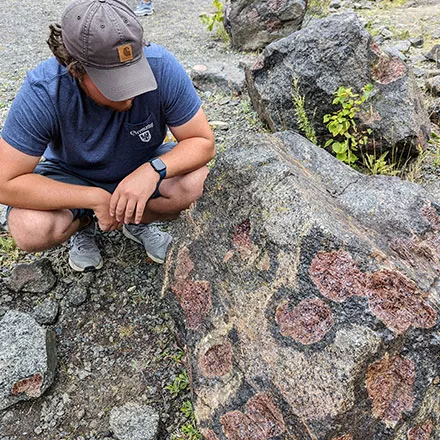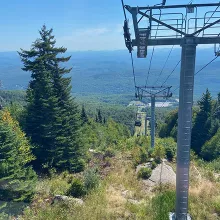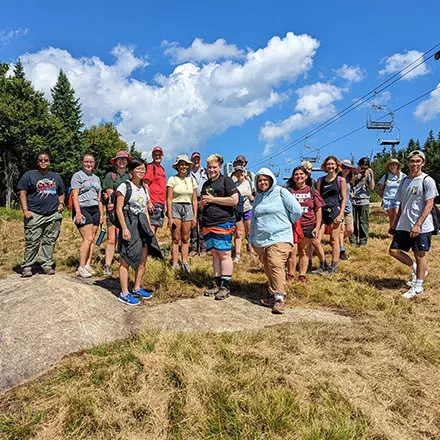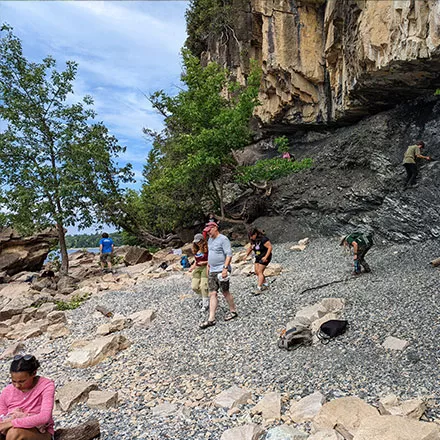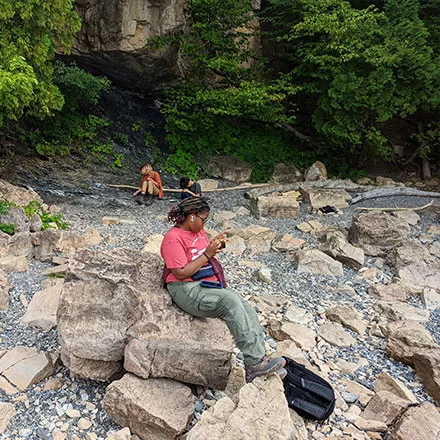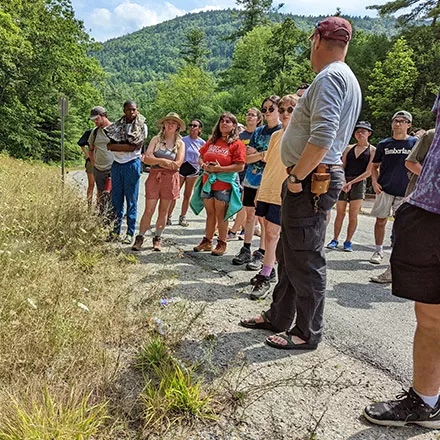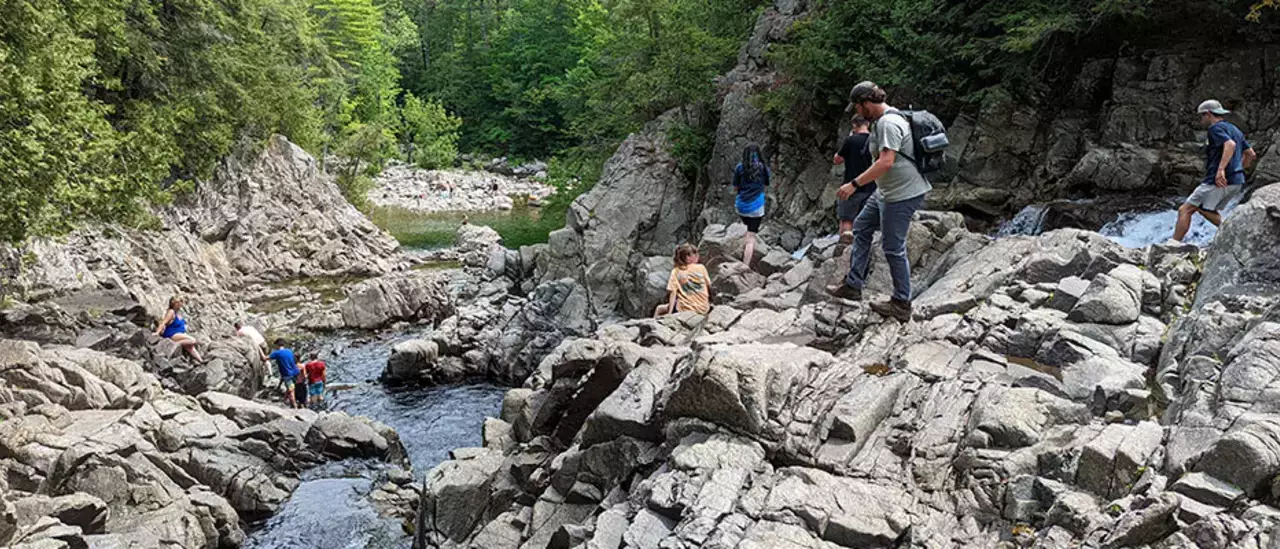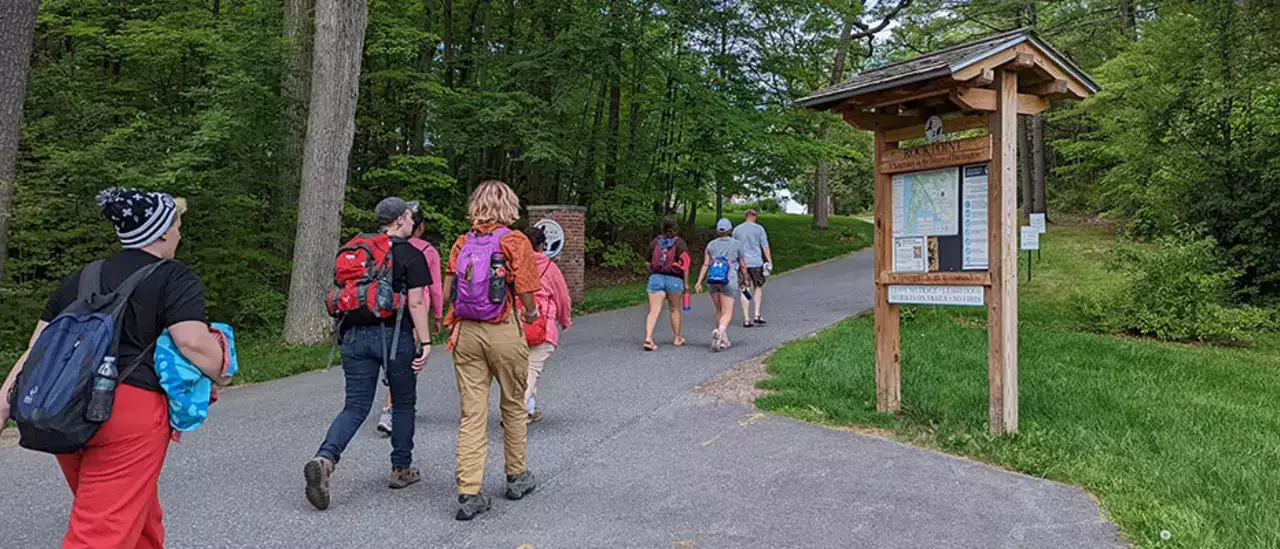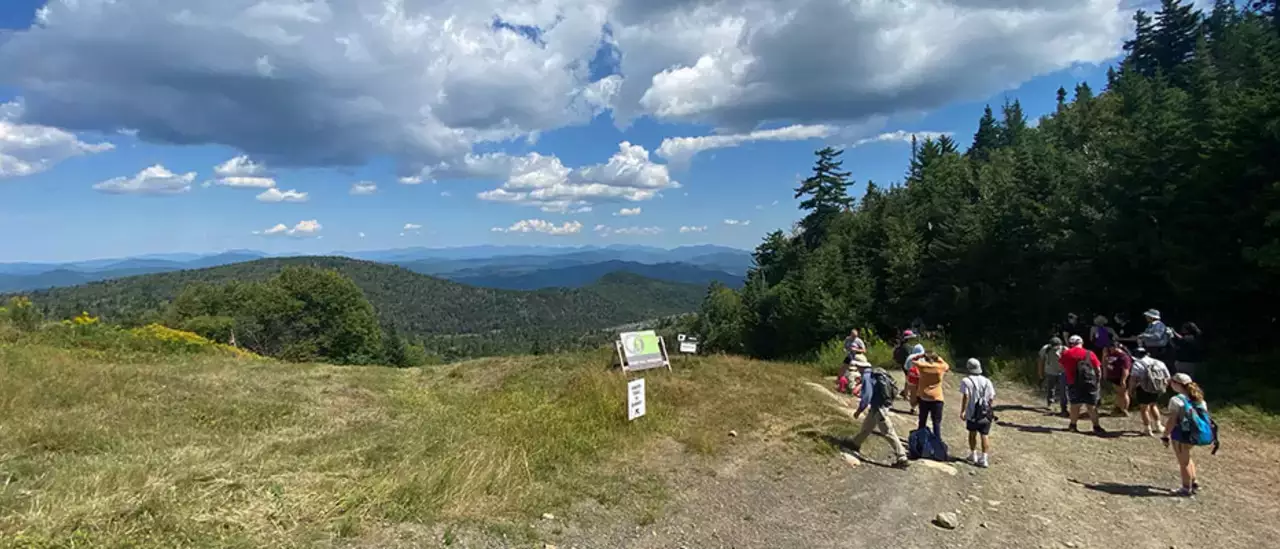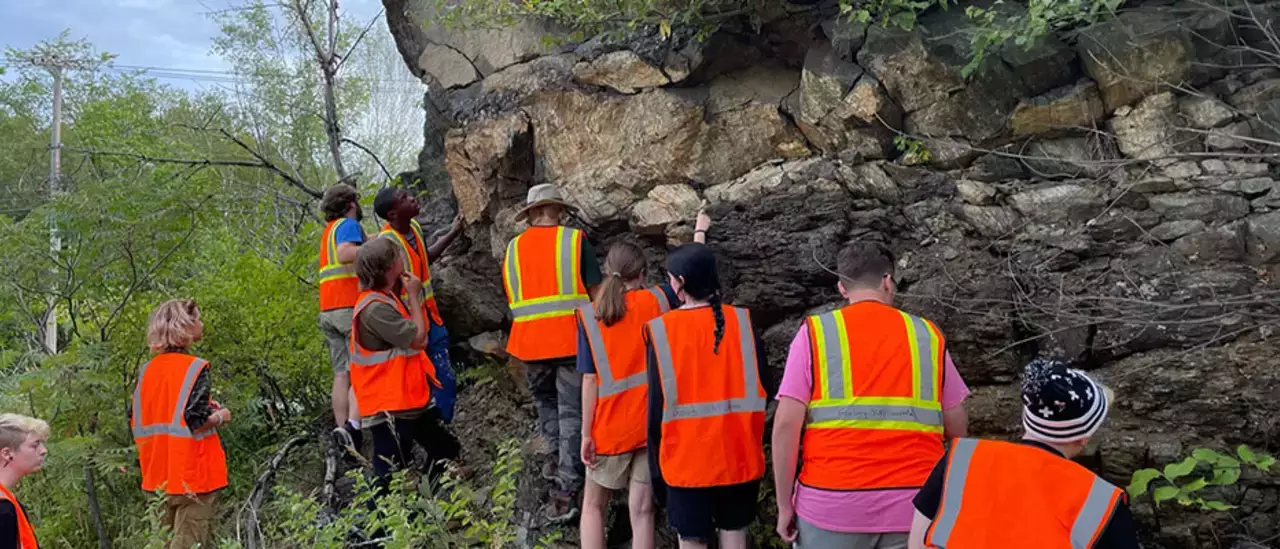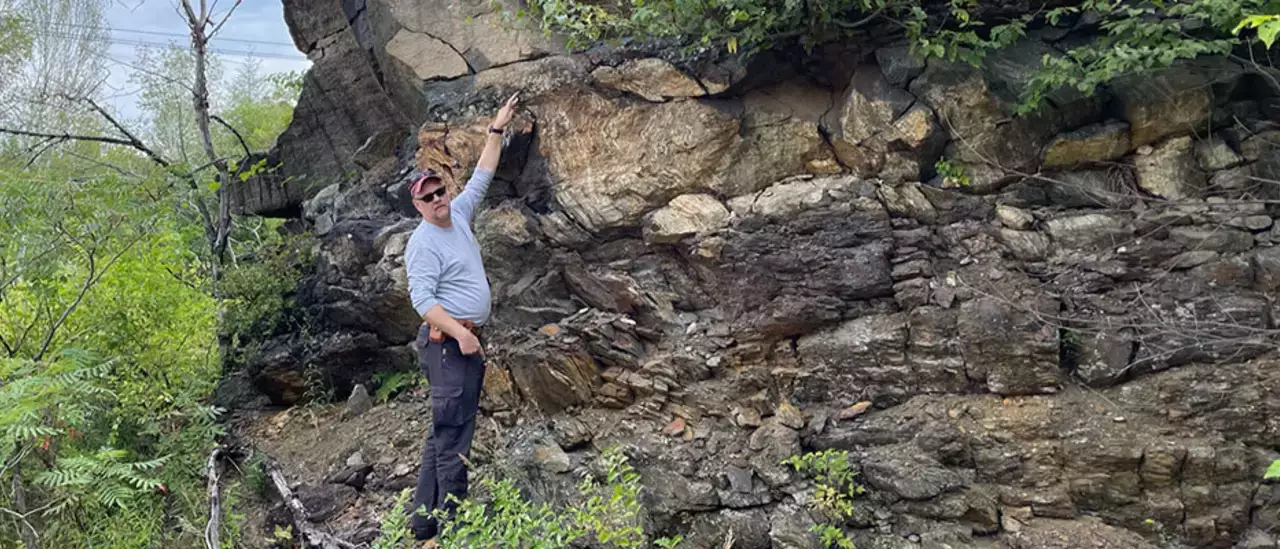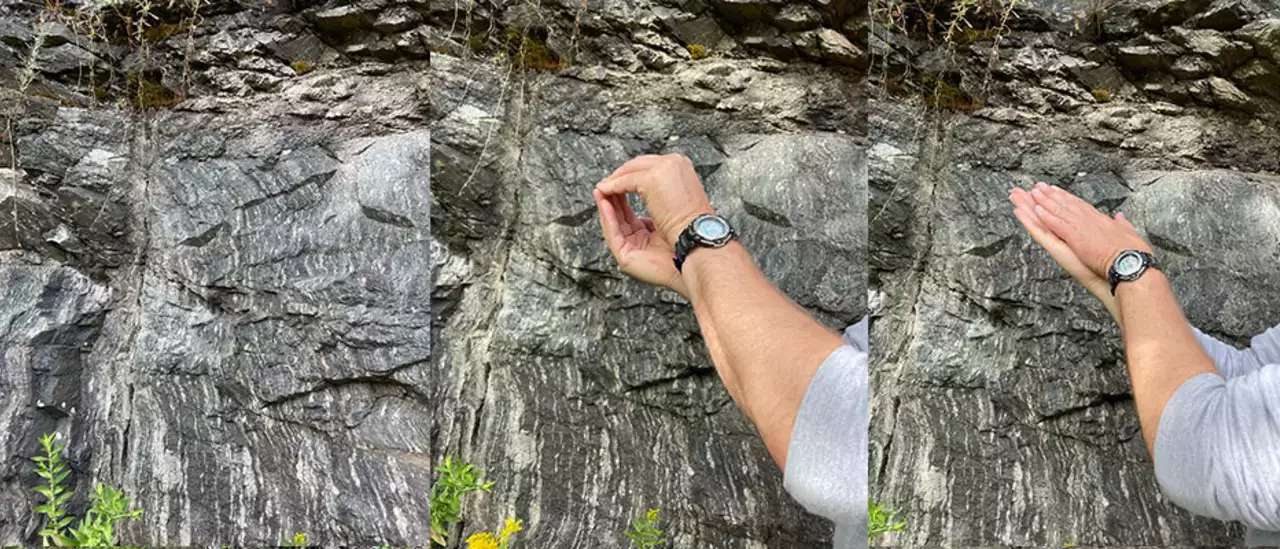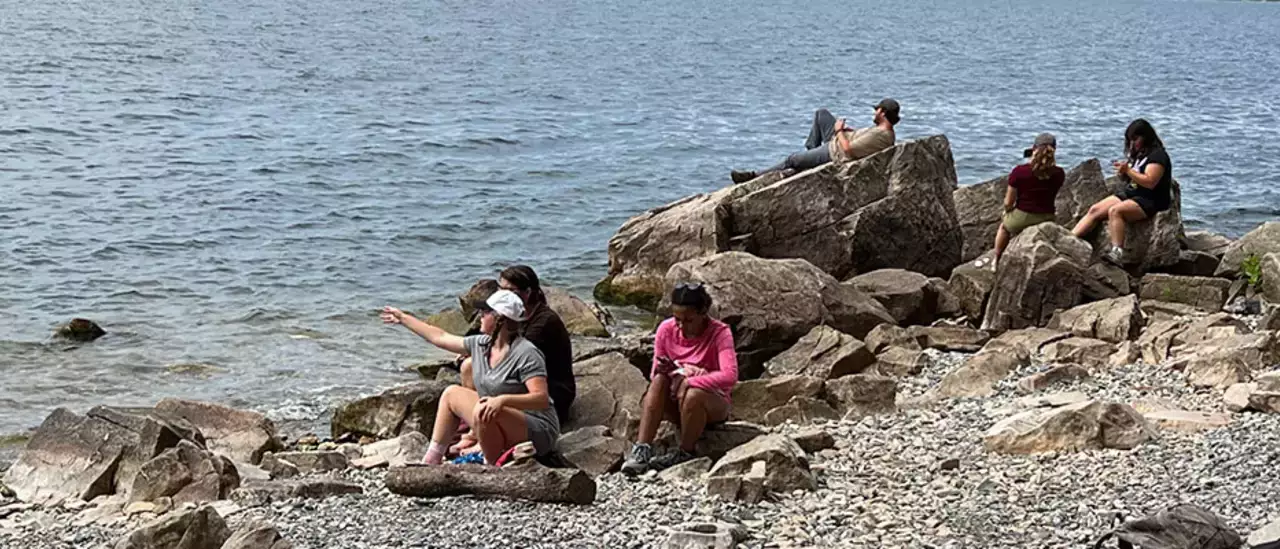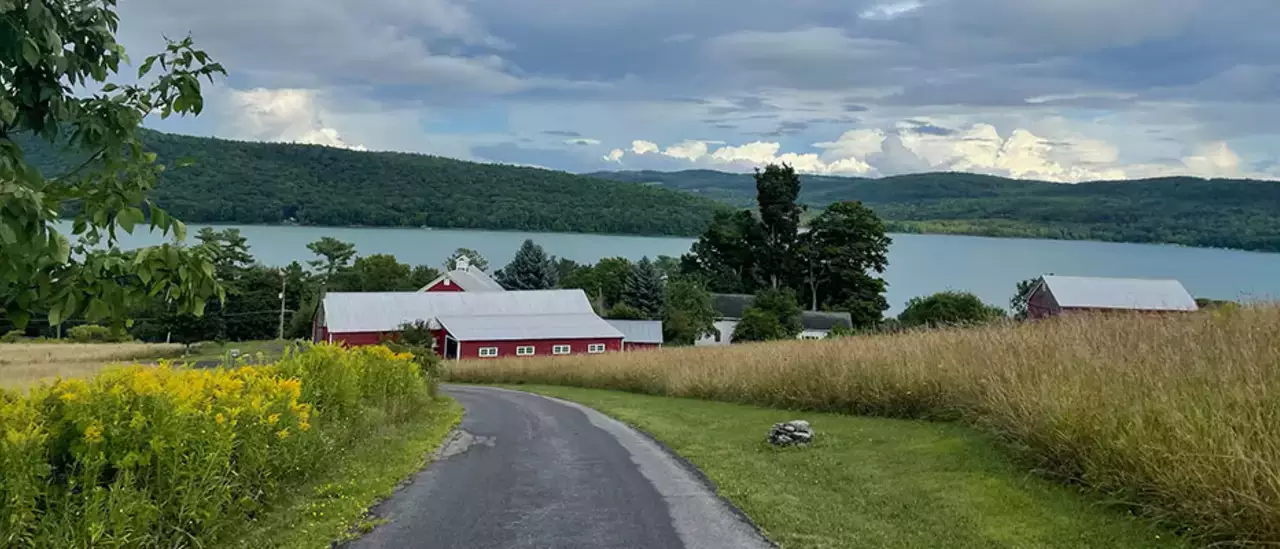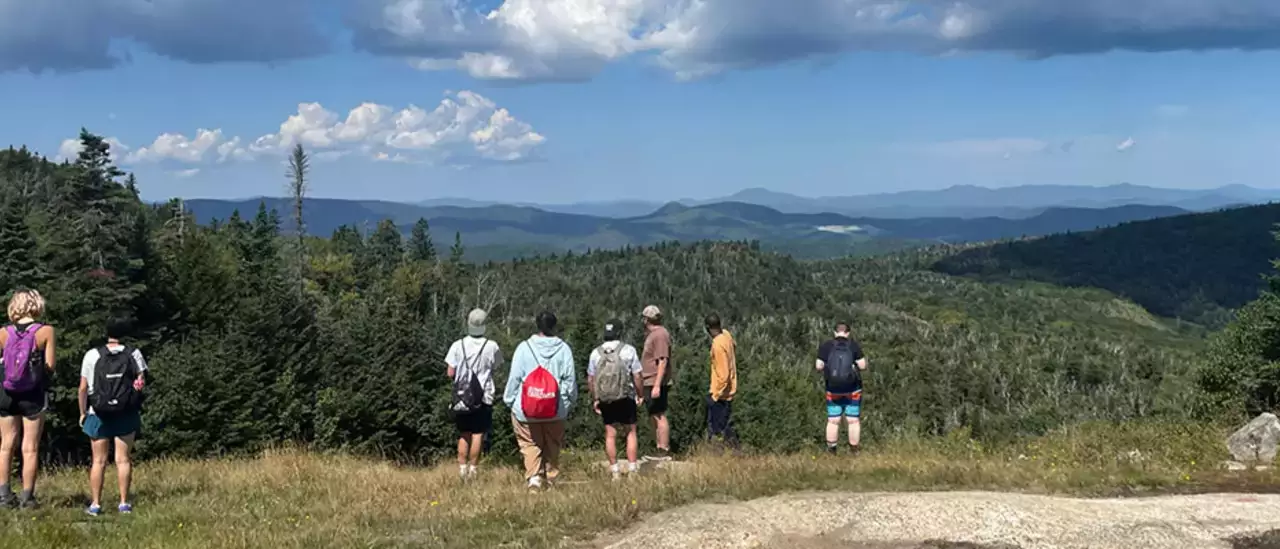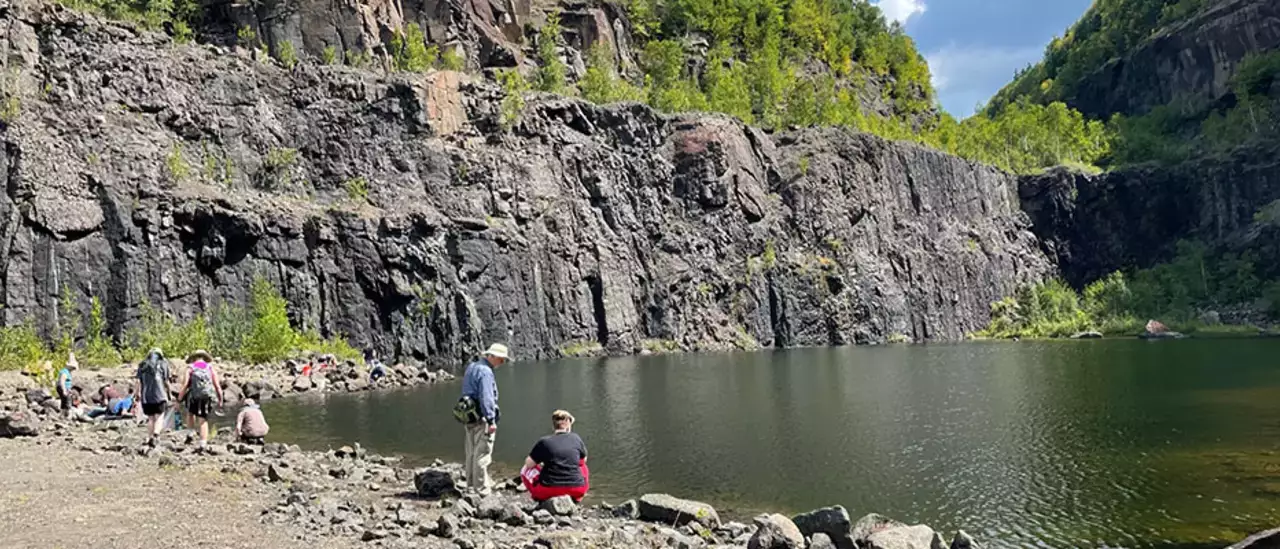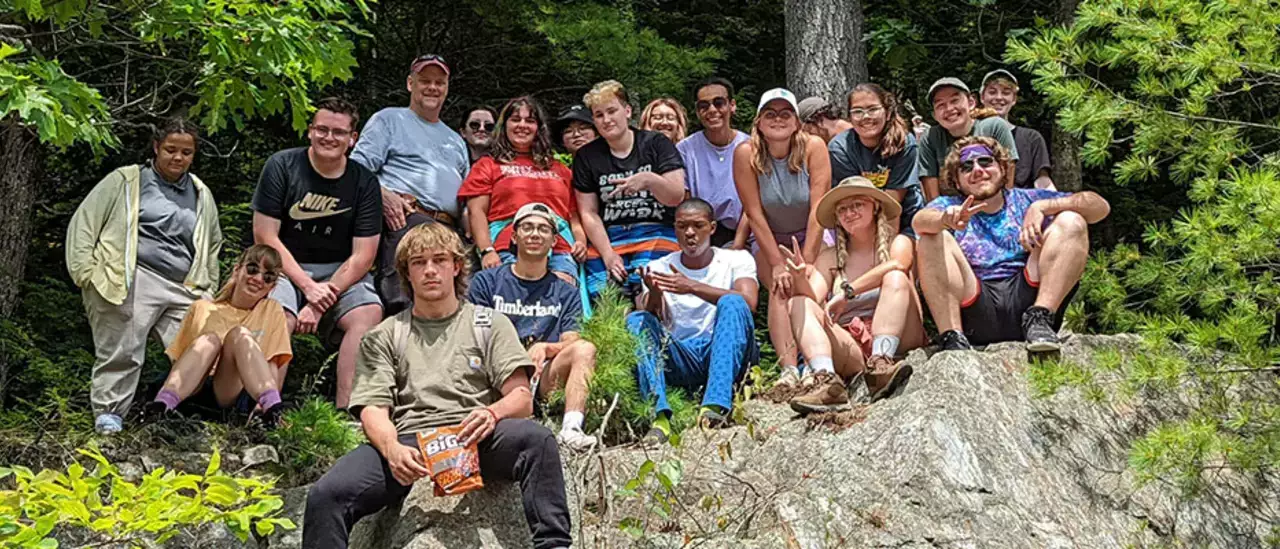Pitching tents, cooking and camping under the starry night sky, jumping into swimming holes, hiking, and seeing the geology of the Adirondack Region first-hand? All in a day’s work during this year’s GEOFYRST (Geologic Experience Outdoors: the First-Year Regional Summer Trip) trip, an immersive outdoor experience for new SUNY Oneonta students.
Seventeen first-year SUNY Oneonta students took part in the trip, a one-credit pre-semester fall course exploring New York and the Northeast. On Aug. 18, students dropped off their belongings for the semester at their residence hall rooms on campus, then packed up vans with gear and hit the road, returning six days later with observations, photos, stories and new friends.
Students were accompanied by lead instructor Dr. Keith Brunstad and assisted by Dr. Les Hasbargen along with three student mentors – Nicholas Walters (Geology), Sam Martin (Adolescence Education Earth Science/Earth Science), and Samantha DeSousa (Meteorology), who took this course when she was an incoming first-year student.
An exciting highlight of the trip included visiting Barton Garnet Mine on Gore Mountain, where the hardest, most rare garnet in the world is found. Garnet is the New York State gemstone, but most of the garnets found here are not gemstone quality, instead being used as abrasives in waterjet cutting, blast media, grinding and polishing around the world.
“The Outdoors Becomes Our Classroom”
While on Gore Mountain, students also went on a scenic gondola “sky ride” to the summit of the mountain, which is 3,563 feet in elevation. They also visited Split Rock Falls and the Champlain Thrust Fault at Rock Point in Burlington, Vermont. On the last day of their trip, students stayed at the Thayer Farm Complex at the SUNY Oneonta Biological Field Station in Cooperstown, NY, relaxing and preparing for the start of the fall semester.
The annual trip, which began in 2007 and is open to all first-year students regardless of major, is special for a number of reasons, Hasbargen said, including the fact that “the outdoors becomes our classroom.”
“It engages new students and fosters a welcoming, inclusive environment in which a cohort of students can build life-long friendships and connections,” he said, “while at the same time exposing students to the outdoor environment through geology to gain an appreciation of how the Earth works. As always, I thoroughly enjoyed meeting and getting to know all of the students.”
